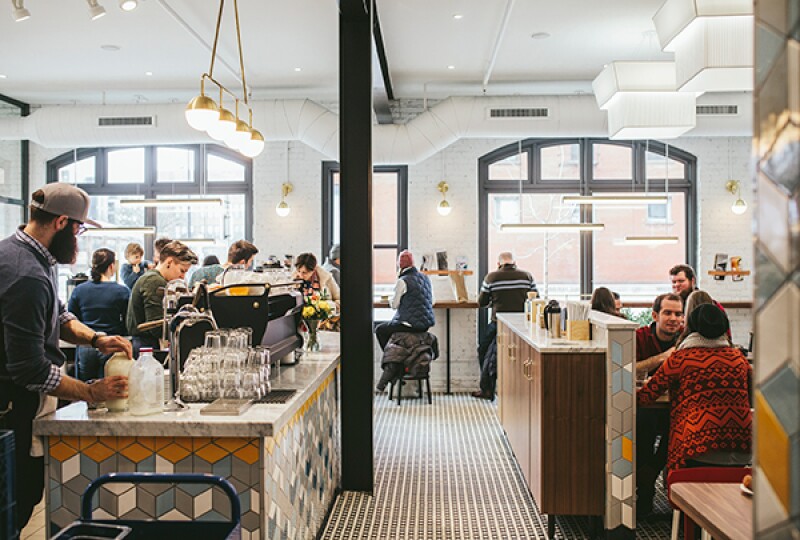In recent years, Minnesota has expanded out from its Scandinavian culinary heritage, and now features a surprisingly diverse food scene. Today, along with hearty, all-American fare and inventive craft beers—and yes, some seriously delicious lefse, or Norwegian potato tortillas—you’ll find dishes representing a spicy melting pot from around the globe, as well as ultra-local Native American cuisine.
Taking its place among the nation’s great food destinations, Minnesota serves up loads of unexpected discoveries and crave-worthy dishes. Come hungry.

Have Lunch at the Midtown Global Marketplace
Food halls have become one of the most fashionable ways to sample a local food scene, and the Midtown Global Market in Minneapolis is the perfect place to start exploring. The marketplace is a bustling hub for up-and-coming chefs and artisans, whose small businesses are continually expanding the city’s menu of global flavors. Showcasing the ethnic diversity of the surrounding neighborhood, which includes a growing Latino community, stalls here sell everything from tres leches cake at Panaderia y Pasteleria Samantha to Cambodian and Thai fusion at Sabbai Cuisine. In fact, some 22 cultures are represented among the more than 45 vendors.
Head to St. Paul for Hmong Cuisine
While Minnesota is perhaps best known for its large Scandinavian diaspora, the Twin Cities are also home to America’s largest community of Hmong—a distinct ethnic group in East and Southeast Asia. During the mid-1970s, many Hmong moved to Minnesota, escaping destructive wars in Laos. Today, you’ll find some of the best Hmong food in the country at St. Paul’s expansive Hmongtown Marketplace and Hmong Village—from steaming bowls of beef pho to spicy papaya salad.
Situated inside a former lumber warehouse, Hmongtown Marketplace, which has been a neighborhood fixture since 2004, has hundreds of vendors and a seasonal outdoor farmer’s market. At Hmong Village, which opened in 2010, the must-try bites include pastel-colored boba or bubble teas; khao piak sen chicken soup flavored with lemongrass and tapioca noodles; and hard-to-resist rice-flour doughnuts filled with sweet bean paste and topped with sesame seeds.

Photo Credit: The Bachelor Farmer/Meet Minneapolis
Explore Northern Food
With its longtime Scandinavian roots, Minneapolis has become something of a satellite for the New Nordic movement. Just this past fall, the movement’s pioneer, chef René Redzepi, was at the American Swedish Institute (ASI) as part of its Nordic Table Chef Series. Keeping pace with the pillars of this culinary revolution—which emphasizes the use of local and seasonal ingredients—Minnesota hot spots are giving the movement their own spin. At Bachelor Farmer it’s called “an exploration of Northern food.” Similarly, the ASI’s Fika Café features a menu that elevates classic dishes like Swedish meatballs with juniper-spiced potato purée, cucumber, lingonberry, and mustard sauce. It also showcases an array of smörgåsar open-faced sandwiches, such as Toast Skagen. How to wash it all down? In Duluth, head to Vikre Distillery, which specializes in traditional aquavit, or “Viking whisky,” infused with caraway and cardamom.

Get Back to Basics with the Sioux Chef
When it comes to culinary creativity, no group has been playing with local ingredients and flavors longer than Minnesota’s Native American communities. Inspired by centuries of history in the area, the Sioux Chef is a group committed to revitalizing Native American cuisine and making it more accessible to the public. Its founder and CEO, chef Sean Sherman, specializes in indigenous, pre-colonial foods of the Great Plains that are naturally gluten-, dairy- and refined sugar-free. With a soon-to-open restaurant in the works, the Sioux Chef currently operates as a catering company, offering healthy dishes like cedar-braised bison, sage-smoked turkey, and cornmeal-crusted walleye trout. Sherman’s meals highlight the Three Sisters, or three main agricultural crops grown by Native Americans—winter squash, corn, and beans—and the foundations of indigenous food systems. The cuisine is not only delicious, but also a symbol of Minnesota’s burgeoning food scene.
For more ideas on mouth-watering places to eat and drink in Minnesota, visit Explore Minnesota.











